Natural Health Solutions
- The Well (Home Page)
- Water Cures Blog
- How To Do Water Cures
- What is Water Cures?
- Electrolytes & Salt
- Drinking Water
- Hire a Hydration Coach
- Acid Reflux
- Addiction Treatment
- Allergy Relief
- Blood
- Bones and Joints
- BP / Heart / Vascular
- Brain / Head / Mental
- Cancer
- Chronic Fatigue
- Cramps No More
- Dehydration
- Edema
- Fibromyalgia
- HIV / AIDS
- Immune System
- Lungs / Respiratory / Cough
- Lupus
- Lyme Disease
- Multiple Sclerosis
- Pain
- Skin Care
- Urinary Tract Infection
- Womens Health
- Water & Weight Loss
- Student Grades
- Survivalist Health Care
- Pet Water Cures
- Hydration Coach
- Testimonials
- My Water Cures
- FAQ
- In The News
- Volunteer
- About / Contact
- Red Light Therapy
- Live Blood Microscopy
Cancer Causes
101 Known Chemicals, Mixtures and Agents
Were you surprised that processed meat can kill you?
Skip Down To the List
And that yummy meat is not at the top of the list o cancer causing things we are exposed to every day. There over 101 things that cause cancer. In all of these, there are some commonalities. There are some differences between the various things that can cause cancer. Knowing what and why can help in your quest for optimal health. Life will not allow us to totally avoiding these, although that would be good. This list can help you be more vigilant to do what it takes to avoid cancer.
The foundation of everything healthy we can do to improve our health is to manage our fluid and electrolyte balance. By eating salt and drinking water, we allow our body to eliminate many toxins and substances that cause cancer.
And while some things may surprise you, such as chimney sweeping and where they get the cancer (yep, it is weird) and salted fish, others may not, like fracking. These are all compiled by the International Agency for Research on Cancer (IARC).
 |
In the news in the fall of 2015, the World Health Organization said that bacon, ham and sausages are carcinogenic. Yet many people eat these and never get cancer in their life time. Why? Statistically, only 1 in 3-4 will get cancer. The answer can be found in commonalities and the differences.
The International Agency for Research on Cancer has put together a list of 116 substances and activities that are considered to cause cancer. This list is divided into three categories of things that cause cancer. These are 'exposure circumstances', 'mixtures' and 'agents'. The full list from the IARC is in a link at the bottom. We have pared it down to 101 and we have started to add a bit of explanation to each. This is an ongoing process as it will take time.
Cancer Causing Exposure Circumstances
1 Smoking Tobacco: burn the tobacco leaf and suck it into your mouth either from a cigarette, hookah pipe (and we feel, probably to a lesser degree, second hand smoking, number 13 on the list) and then exhaling to expel it.
2 Sun-beds and Sun-lamps: the ultraviolet light (actually ultraviolet radiation) so you can look great without going to the beach can cause skin cancer, cataracts, and premature skin aging. Ultraviolet radiation alone was number 115 on the list and solar radiation was number 106 under agents.
3 Aluminum Manufacturing: workers in plants where aluminum is produced have an increased risk of lung and bladder cancer. Exposure to the fumes from the process and the fumes from the coal-tar pitch can cause cancer.
4 Arsenic in Your Drinking Water: a semi-metal found in natural deposits and natural deposits in the earth, agricultural and industrial practices (used to make some alloys), arsenic can get into our drinking water supply. Arsenic can cause skin cancer, and linked to causing liver, lung, kidney, and bladder cancer.
5 Auramine: used as an acid-fast bacteria stain, it can also be used as an antiseptic agent and to make dyes. Men who work in the manufacturing of aruamine were found to have more bladder tumors. The exposure was related to inhaling formaldehyde and sulphur during the manufacturing process.
6 Leather Dust: Boot and Shoe Repair and Manufacturing which produce leather dust, benzene and other solvents these workers are exposed to result in an increased risk of nasal cancer and leukemia. The risk may vary depending on the level and duration of exposure.
7 Chimney Sweeps: exposure to chimney soot, dust and asbestos may cause what is called 'chimney sweep' cancer. This is an occupational malignancy, squamous cell carcinoma of the scrotum, caused by chimney soot-related carcinogens.
Other cancers of the esophagus, liver, lung, bladder, and blood cancers have also been reported. New findings included significantly elevated systemic inflammation response for cancer of the colon, pleura, adenocarcinoma of the lungs.
Exposure to soot and are likely causes of the observed cancer excesses, with contributions from adverse lifestyle factors. Preventive actions to control work exposures and promote healthier lifestyles are an important priority.
8 Coal Gasification: Job exposure to coal gasification processes– where coal is reacted with oxygen, steam and carbon dioxide to create a gas – was found to be associated with an increase incidence lung cancer.
9 Coal Tar Distillation
10 Coal Tar Pitches
11 Coal tar (a cancer causing agent): Made from coal, coal tar and coal-tar pitch are used as a base for coatings and paint, in roofing and paving and in asphalt products. chemical compounds. These have numerous chemicals including carcinogens such as benzene. Exposure to coal tar fumes can be through breathing, ingestion, and absorbing through the skin.
Coal tar is a bi-product of coke production.
12 Coke (the kind made from coal): Workers exposed to coke oven emissions have an increased risk of lung and kidney cancer.
13 Furniture / Cabinet Makers: workers in this industry have an increased risk of nasal cancer due to the exposure to wood dust.
14 Haematite Miners Exposed to Radon: Underground hematite miners are exposed to radon, a radioactive carcinogen, which can increase the risk of lung cancer and is implicate in leukemia, which can cause a large increase in the risk of lung cancer.
15 Secondhand Smoking: Even if you are not a smoker but breathe in other peoples smoke, you have a 25% increased risk of getting cancer in the lungs. There is also a risk of getting cancer in your larynx (voice box) and pharynx (upper throat).
16 Iron and Steel Foundries: Foundry workers have an increased risk of lung cancer. These workers are exposed to numerous genotoxic and carcinogenic substances.
17 Isopropanol Manufacturing: People in the production of isopropanol have an increased risk of cancer from exposure to diisopropyl sulphate, isopropyl oils and sulphuric acid. Isopropyl alcohol solution most often found in rubbing alcohol, hand sanitizers, and disinfecting pads.
18 Magenta Dye Making: involves chemicals that have been linked to bladder cancer.
19 Painters (working professionally as): Bladder cancer, leukaemia and lung cancers have been associated with exposure to benzene (found in paint production and is mixed with other organic solvents) and lung cancer possibly from exposure to lead chromate and to asbestos.
20 Paving / Hot Roofing Using Coal-tar Pitch: may cause cancer due to numerous chemical compounds such as benzene.
21 Rubber Manufacturing Industry: workers in rubber manufacturing are more likely to have bladder, lung cancer and leukemia.
22 Acid Mists that Contain Sulphuric Acid: condensation of sulphuric acid vapor can increase the risk of lung cancer. Exposure may come from working in the chemical or metal plating industry, producing detergents, soaps, fertilizers, lead-acid batteries, printing, and photography shops.
Outdoor air may have it when sulfur dioxide is released from the burning of coal, oil, and gas plants or burning appliances.
Likewise, there are relatively few sulfuric acid air pollution episodes today.
People living near hazardous waste sites that contain sulfuric acid have an increased risk of exposure of breathing contaminated air than the general public.
You can also be exposed to sulfuric acid by touching the material that forms on the outside of your car battery.
Sulfuric acid is formed when some toilet bowl cleaners mix with water.
Carcinogenic (Cancer Causing) Mixtures
23 Aflatoxins (fungi toxins): some fungi are also very strong cancer causing agents.
24 Alcoholic Drinks: Alcohol has been associated with breast, colorectal, larynx, liver, oesophagus, mouth and pharynx cancers, and as a probable cause of pancreatic cancer, based on IARC classification. Something to think about. Something to consider.... people who regularly consume alcohol do not get cancer.
25 Areca Nut: much like coffee, it is chewed with betel leaf to enhance the drug effect. It increases the risk of mouth and esophageal cancer.
When betel is chewed with areca nut, the risk of cancer is increased. When Betel is chewed with tobacco, the risk is even further increased.
26 Betel Nut and Tobacco: much like coffee, it is chewed with betel leaf to enhance the drug effect. It increases the risk of mouth and esophageal cancer. 26 Burning Coal: coal dust is not only cancer causing to coal miners, coal burning stoves likewise produce dust that when inhaled, is a well known cause of cancer.
27 Diesel Exhaust Fumes: have over 30 chemical compounds that are listed as carcinogenic to some degree by the IARC.
28 Untreated Mineral Oils: as well as mildly treated mineral oils have bee classified by the World Health Organization as cancer causing in humans. Oils that are highly refined, because of a lack of research, cannot be considered harmless.
29 Aristolochic Acid: from Chinese herbal medicine, this plant extract has been found to cause kidney disease and urothelial cancer.
This is found in in some natural diet and allergy products.
Products where Aristolochic Acid is found.
30 Shale Oils: and sale gas, even from fracking may release toxic chemicals into air, water and soil during the process. The chemicals use for fracking have been linked to increases in cancer risks. These include benzene, acrylamide, and formaldehyde are all listed as cancer causing by the IARC.
31 Chewing (smokeless) Tobacco: has been linked to cancers of the larynx and the mouth.
32 Processed meat: has been specifically linked to bowel cancer. Including cured and treated meats, in October 2015, the World Health Organization(WHO) listed it as cancer causing.
Carcinogenic Agents and Groups of Agents
33 Acetaldehyde: a cancer causing toxic by-product that our body makes when alcohol is metabolized. It is also used in making plastics, adhesives and fabrics and is most notable when off gassing takes place. This is the smell you experience when in a new building, in a new car or opening a products that have a chemical smell. It is sometimes called essence of new car smell. Acetaldehyde is 30 times more toxic than alcohol.
Aacetaldehyde although short lived has the potential to cause significant damage to your health. This is most notable in the liver where the most of the alcohol metabolism takes place.
Some alcohol is also metabolized in other tissues of our body. When this happens in the pancreas and the brain it can cause damage to those tissues. Some of the alcohol is metabolized to acetaldehyde in the gastrointestinal tract. The acetaldehyde can cause damaging there too.
It is also the the chemical that is believed to cause hangovers.
Cancer: results because of its damaging effects on DNA and preventing the body from repairing it.
Acetaldehyde and alcoholism: As the levels of acetaldehyde increase, the ability of the body to metabolize it is impaired resulting in even more being accumulated. This increases liver damage and can result in hepatitis and cirrhosis. If you smoke and drink, there is an even higher levels of acetaldehyde in your saliva.
One theory holds that acetaldehyde is responsible for alcohol addiction. Acetaldehyde, when in your brain, can cause abnormal chemical reactions. These reactions result in forming compounds that are surprisingly similar to morphine.
34 4-Aminobiphenyl: not currently being made. The only concern is past exposure in the workplace. It is found in tobacco smoke and smokers have been found to have higher levels of the breakdown products of 4-aminobiphenyl in their blood than those who do not smoke.
35 Arsenic: is found in minerals and in a crystal form. It is a metalloid. Used to strengthen copper and as a component for lead for car batteries. Arsenic compounds are used in pesticides, herbicides and insecticides and as chemo therapy for certain kinds of leukemia. It is a known cancer causing material.
36 Arsenic Compounds:
37 Asbestos: is a mineral consisting of thin microscopic fibers that are resistant to heat, fire, chemicals and do not conduct electricity. Asbestos in the past has been mined and used in home construction (siding) automotive (breaks) and other industries. Now there is an industry focused on the removal of past asbestos use.
When the tiny asbestos fibers become airborne and are breathed in, they can become trapped in our lungs. Our body does not easily get rid of these fibers and as they accumulate, health problems result. Asbestosis: lung inflammatory causing shortness of breath, coughing, and eventually scarring of the lungs. Difficulty to breathe resulting in it being hard to breathe. Rarely,
Mesothelioma results, a cancer of the lining of the lungs, chest cavity, and or abdomen. Lung cancer and other lung problems making it hard to breathe.
There has been studies suggesting asbestos exposure is possibly complicit in other cancers, such as cancers of the gastrointestinal tract, throat, kidney, brain, bladder, voice box, gallbladder, and others. There is no conclusive evidence of this as of this writing (2015).
38 Azathioprine (AZA): an immunosuppressive drug is used for organ transplantation and autoimmune diseases. Originally it was a cancer drug.
A major problem is bone marrow suppression, a life threatening condition.
The International Agency for Research on Cancer lists it as a group 1 carcinogen (cancer causing to humans).
39 Benzene: is an organic chemical compound that comes from crude oil. It consists of carbon and hydrogen atoms, thus it is a hydrocarbon.
It is mainly used in the making of chemicals (ethylbenzene and cumene). It is a component of gasoline. Its use in industry has been limited because of how carcinogenic it is.
40 Benzidine: has been removed from use in industry because of how carcinogenic it is. It is listed in both the U.S. EPA's List of Chemicals of Concern and is illegal in the UK.
41 Benzo[a]pyrene
42 Beryllium and beryllium compounds
43 Chlornapazine (N,N-Bis(2-chloroethyl)-2-naphthylamine)
44 Bis(chloromethyl)ether
45 Chloromethyl methyl ether
46 1,3-Butadiene
47 1,4-Butanediol dimethanesulfonate (Busulphan, Myleran)
48 Cadmium and cadmium compounds
49 Chlorambucil
50 Methyl-CCNU (1-(2-Chloroethyl)-3-(4-methylcyclohexyl)-1-nitrosourea; Semustine)
51 Chromium(VI) compounds
52 Ciclosporin
53 Contraceptives, hormonal, combined forms (those containing both oestrogen and a progestogen)
54 Contraceptives, oral, sequential forms of hormonal contraception (a period of oestrogen-only followed by a period of both oestrogen and a progestogen)
55 Cyclophosphamide>
56 Diethylstilboestrol
57 Dyes metabolized to benzidine: once part of making dyes, as stated above, it is not used because removed from use in industry because of how carcinogenic it is.
58 Epstein-Barr virus
59 Oestrogens, nonsteroidal
60 Oestrogens, steroidal
51 Oestrogen therapy, postmenopausal
62 Ethanol in alcoholic beverages
63 Erionite
64 Ethylene oxide
65 Etoposide alone and in combination with cisplatin and bleomycin
66 Formaldehyde: If you are old enough, it was used to preserve the frogs for dissection in school. It is used in making many materials and chemical compounds. It is used in the production of fabric treatments, lawn fertilizers, cosmetics, disinfectants, resins used in particle boards, plywood, and coatings. Since 2002, it has been categorized as a known human carcinogen.
67 Gallium arsenide
68 Helicobacter pylori (infection with)
69 Hepatitis B virus (chronic infection with)
70 Hepatitis C virus (chronic infection with)
71 Herbal remedies containing plant species of the genus Aristolochia
72 Human immunodeficiency virus type 1 (infection with)
73 Human papillomavirus type 16, 18, 31, 33, 35, 39, 45, 51, 52, 56, 58, 59 and 66
74 Human T-cell lymphotropic virus type-I
75 Melphalan
76 Methoxsalen (8-Methoxypsoralen) plus ultraviolet A-radiation
77 4,4’-methylene-bis(2-chloroaniline) (MOCA)
78 MOPP and other combined chemotherapy including alkylating agents
79 Mustard gas (sulphur mustard)
80 2-Naphthylamine
81 Neutron radiation
82 Nickel compounds
83 4-(N-Nitrosomethylamino)-1-(3-pyridyl)-1-butanone (NNK)
84 N-Nitrosonornicotine (NNN)
NNN is found in numerous tobacco products including smokeless tobacco (chewing tobacco and snuff) cigarettes, and cigars. It is present in smoke from cigars and cigarettes, in the saliva of people who chew betel quid with tobacco, and in the saliva of oral-snuff users.
85 Opisthorchis Viverrini Infection:
opisthorchis a species of liver fluke parasites (worms). It is also known as the Southeast Asian liver fluke. Infection is considered a cause of cancer.
Signs and symptoms: Often, there are no symptoms but they may be indigestion, abdominal pain, diarrhea, or constipation. The longer the infection, the increase in symptoms such as an enlarged liver and malnutrition. In rarely, inflammation of the gall bladder and ducts and resulting cancer may develop. Infection can appear to be acute schistosomiasis, with fever, facial edema, swollen lymph glands, sore joints, and rash.
Diagnoses is through microscopic examination of your poop. It may take more than one to find it.
How In the World Did I Get It?
We can get infected by eating raw or under-cooked freshwater fish that contain the larvae. Lightly salted, smoked, and or pickled fish may also be infections.
86 Outdoor air pollution
87 Particulate matter in outdoor air pollution
88 Phosphorus-32, as phosphate
89 Plutonium-239 and its decay products (may contain plutonium-240 and other isotopes), as aerosols
90 Radioiodines, short-lived isotopes, including iodine-131, from atomic reactor accidents and nuclear weapons detonation (if you were exposed during childhood)
91 Alpha and Beta Particle Emitting Radionuclides Deposited Internally: Radionuclides both occur naturally and are artificially made in nuclear reactors, cyclotrons and particle accelerators. Most have half lives of less than 60 minutes and are only produced artificially. All chemical elements have radionuclides. If it is heavier than lead, it exists only as a radionuclide.
Radionuclides (those with suitable half-lives) are used for both diagnosis and treating in medicine. A radio active tracer is used for imaging. One used as a drug is called a radiopharmaceutical.
92 Radium-224, 226, 228, and 222 a well as their decay products:
93 Schistosoma haematobium (infection with)
94 Silica, crystalline (inhaled in the form of quartz or cristobalite from occupational sources)
95 Talc containing asbestiform fibres
96 Tamoxifen
97 2,3,7,8-tetrachlorodibenzo-para-dioxin98 Thiotepa (1,1’,1”-phosphinothioylidynetrisaziridine)
99 Thorium-232 and its decay products, administered intravenously as a colloidal dispersion of thorium-232 dioxide
100 Vinyl chloride
101 X-radiation and gamma radiation
Airport Scanner Radiation:
Recent Articles
-
Dark Screen Microscopy: What it is, does and what it can tell you.
Jul 07, 19 05:23 PM
Dark Screen Microscopy allows for a BioNutritional Auditi to look at your blood in its whole, live state -
About Water Cures and how water can help improve your health and life
Oct 25, 18 09:38 PM
About water cures: information on the Water Cures Protocol, Dr. Batmanghelidj and the founder of this site, Bob Butts.. -
Water Cures Testimonials
Apr 16, 18 09:26 PM
Water cures testimonials of those who improved their health using the water cures protocol.
October 22, 2018...
Robert Butts, founder of WaterCures.org passed away at the age of 83. He will be missed.

 |
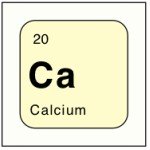 |
Warning: Research shows calcium supplements may be harmful to your health.
| Fixing Blood Disorders
Posted December 2016 |
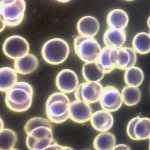 |
© 2016 Jonathan Steele
It is amazing how so many things that are new to us were common knowledge in the past. One basic practice of the Water Cures protocol is to drink at least 30-45 minutes before and 2 1/2 hours after a meal. This is not a new thought however. Notice what a magazine from 1925 had to say...
"Drink plenty of water two hours after each meal; drink none just before eating; and a small quantity if any at meal time. Do not take a bath until two hours after eating a meal, nor closer than one hour before eating. Drink a full glass of water both before and after the bath." (Golden Age, Sept. 9, 1925, pp. 784-785)
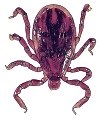 |
New in 2016
Cancer 1, Natural Cures 0
The War...is against...
Cancer Natural Cures
---------------------
| Hand Joint Pain: How Can I Make It Go Away? |
 |
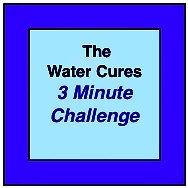 |
to try a no cost, scientifically proven way of improving your well being?
Click Here to try the 3 Minute Challenge
Find them right here!
 Shoulder Joint Pain Relief Shoulder Joint Pain Relief |
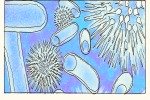 |
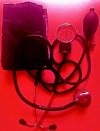 |
What Your Doctor's Not Telling You!
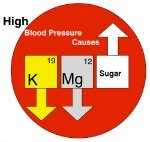 High Blood Pressure Causes High Blood Pressure Causes |
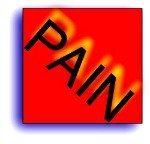 |
 |
We started expanding on the causes...
The weirdest...chimney sweep cancer. You won't believe where it strikes.
Our theory on...
Healthy Hydration for Athletics & the reason for hydration guideline failures in the past.
We speak to organizations small and large, private and corporate.
Our scientifically proven training works to improve performance and decrease lost days due to illness.
We are currently speaking to hospitals to train staff in ways to decrease the readmission rates in several disease processes that pose high risk of <30 day readmission.
We can cut the rates by up to 70%. Ask us how.
Nurse Jon for more information on hydrating to improve performance.
Here is the Science
We are not promoting increased salt intake. We are suggesting taking salt in amounts appropriate to your bodies needs, based on water needs. Our needs are not one size fits all.
Note: Do you have CHF or Kidney Disease? Then.....
THIS IS NOT FOR YOU.
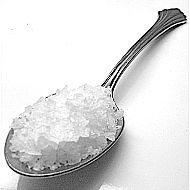 |
Read This Study
And Decide for Yourself
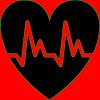 |
For Most of Us, No!
According to a JAMA study.
A Review of the above JAMA Article
Study: Salt May Not Be All Bad?
Listen to your body. Do not use this if you are under a doctors care. Do not stop taking medications without consulting your doctor. If you are on medications, consult your doctor if you start the Water Cures Protocol as it may change your needs.
 |
Click Here to Discover How
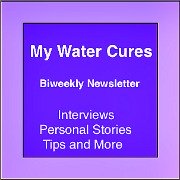 |
Click Here
Sign Up for your biweekly newsletter.
 |
 |
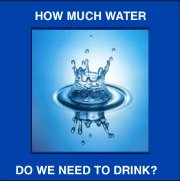 |
If you are looking for an affordable alternative natural health care for depression, consider the Water Cures protocol.
Like What You're Learning? Please share your likes on Facebook
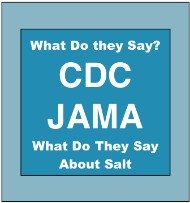 |
 |
 |
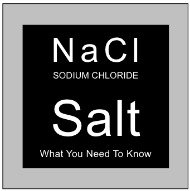 |
Hi, my name is Sharon. The webmaster of this site is my nurse, my personal water coach and my husband.
As this site was first being built, I had a headache and as usual took an Ibuprofen. Impatient for it to start working, I decided to try the Water Cures. I took a pinch of salt and a glass of water. Then I took a second pinch of salt and another glass of water. My headache was gone in less than 5 minutes.
From my personal experience, it usually takes 30 to 45 minutes for Ibuprofen to work. Some have found it takes ibuprofen 24 minutes to start working.
Yet on the Water Cures protocol, my headache was gone in 5 minutes.
Its simple: give your body what it needs and your body will give you what you need, the ability to feel great.
Water Cures was the solution for the elimination of my headache. It is what I will use from now on.
Why not give it a try yourself.
